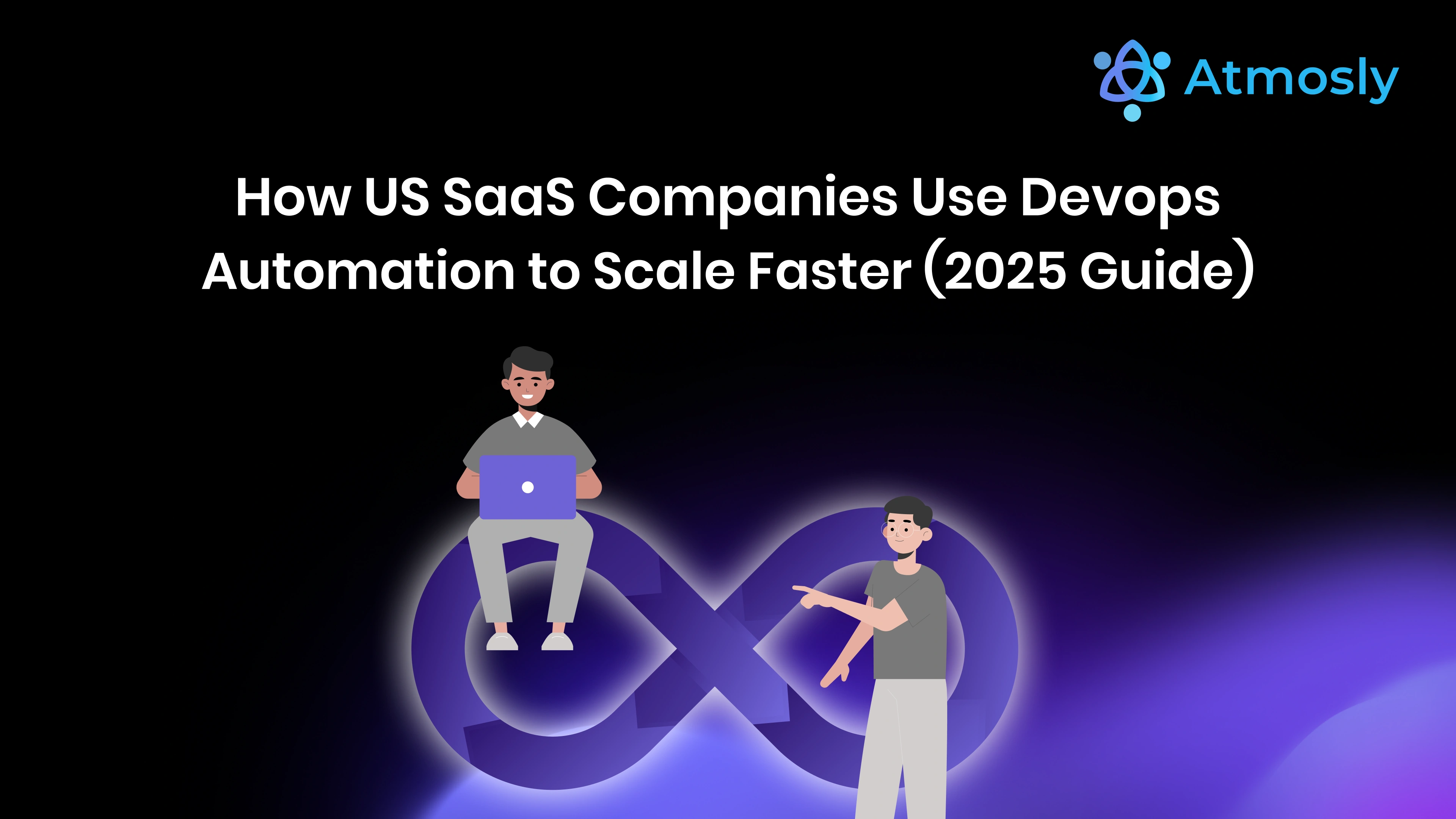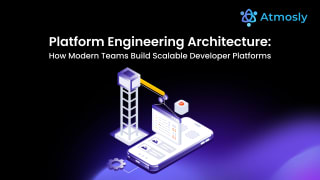The US SaaS market is one of the most competitive in the world. With thousands of startups launching each year and established players like Salesforce, Atlassian, and HubSpot continuing to grow, speed and scalability have become make-or-break factors. Customers expect frequent updates, near-zero downtime, and seamless experiences. At the same time, SaaS companies must deal with skyrocketing cloud costs, a shortage of DevOps engineers in the US, and ever-tightening compliance requirements such as SOC 2, HIPAA, and FedRAMP.
In this environment, DevOps automation is emerging as the secret weapon for US SaaS businesses. It enables them to release features faster, scale infrastructure efficiently, cut costs, and ensure compliance without overwhelming their teams. Unlike traditional DevOps, which still relies on manual steps and siloed toolchains, automation leverages integrated pipelines, AI-driven insights, and policy-as-code to accelerate growth while maintaining stability.
In this article, we’ll explore how US SaaS companies use DevOps automation to scale faster, from speeding up CI/CD pipelines to managing compliance at scale. We’ll also cover challenges, best practices, and the future of automation-first SaaS in the United States.
1. The Scaling Challenges of US SaaS Companies
Scaling a SaaS business in the US comes with unique obstacles. Let’s examine some of the most common.
1.1 Engineering Talent Shortage
The US faces a significant shortage of skilled DevOps engineers. According to recent surveys, DevOps remains one of the hardest roles to fill, with salaries for senior engineers often exceeding $160,000 annually. For startups and mid-sized SaaS companies, hiring enough talent to manage rapid scaling is often not feasible.
1.2 Cloud Cost Explosion
Cloud providers like AWS, Google Cloud, and Azure dominate the US SaaS landscape. While they provide scalability, many companies find their bills growing uncontrollably. Without automated cost optimization, startups often burn through venture funding faster than expected.
1.3 Compliance Pressure
SaaS companies operating in the US must meet strict compliance standards:
- SOC 2 for service providers.
- HIPAA for healthcare SaaS.
- PCI-DSS for fintech applications.
- FedRAMP for SaaS providers serving government agencies.
Manual compliance processes are time-consuming and slow-growing.
1.4 Customer Expectations
US customers expect 99.99% uptime and frequent feature updates. Any downtime or delay in delivering new functionality can push customers toward competitors.
1.5 Toolchain Complexity
Many SaaS companies cobble together CI/CD, monitoring, IaC, and security tools. Managing this fragmented toolchain creates bottlenecks instead of enabling scale.
These challenges make DevOps automation not just beneficial but essential for SaaS companies aiming to compete in the US market.
2. What is DevOps Automation in the SaaS Context?
DevOps automation is the practice of using technology from CI/CD pipelines to AI copilots to automate repetitive DevOps tasks such as infrastructure provisioning, testing, deployments, monitoring, compliance, and cost management.
2.1 How It Differs from Traditional DevOps
- Traditional DevOps: Improves collaboration but still relies on manual approvals, scripting, and patchwork integrations.
- DevOps Automation: Eliminates human bottlenecks with automated pipelines, policy-as-code, and AI-driven troubleshooting.
2.2 SaaS-Specific Needs for Automation
SaaS companies in the US face unique scaling requirements:
- Multi-Tenancy: Supporting thousands of customers on shared infrastructure.
- Rapid Releases: Pushing updates daily without downtime.
- Global Scale: Serving users across time zones with reliable infrastructure.
- Compliance: Automating industry-specific regulatory requirements.
2.3 Example
Imagine a SaaS startup in New York growing from 100 to 10,000 customers in under a year. Without DevOps automation, the team would need to triple its headcount to manage scaling. With automation, the same lean team can auto-provision Kubernetes clusters, embed compliance checks, and roll out new features daily all without extra hires.
3. Key Areas Where US SaaS Companies Use DevOps Automation
Let’s explore the core areas where DevOps automation helps SaaS companies scale faster.
3.1 Faster CI/CD Pipelines
CI/CD is the backbone of modern SaaS delivery. In traditional setups, deployments often require manual QA approval or operations intervention. Automation changes this.
- Automated Testing: Unit, integration, and security tests run automatically.
- Continuous Deployment: Code merges trigger immediate deployments.
- Rollback Automation: If an issue arises, the system rolls back automatically.
Example: A SaaS company in San Francisco uses GitHub Actions with Atmosly’s automation to deploy 50+ updates per day without downtime.
3.2 Infrastructure as Code (IaC) & Auto-Provisioning
Scaling SaaS often means rapidly adding resources. IaC tools like Terraform and Pulumi allow teams to define infrastructure in code, making it repeatable and auditable. With automation, infrastructure is provisioned automatically.
- Multi-Cloud Scaling: SaaS companies can deploy workloads across AWS, Azure, and GCP.
- Repeatability: New environments can be cloned with one click.
- Auditability: Every infrastructure change is versioned.
Example: A Chicago-based SaaS scales into Europe by provisioning entire environments automatically with Pulumi and policy-as-code for compliance.
3.3 Kubernetes & Container Orchestration
Most US SaaS companies now run on microservices and containers. Kubernetes is the de facto standard for orchestration, but managing it manually is complex. Automation platforms simplify scaling by:
- Autoscaling containers during traffic spikes.
- Self-healing workloads when pods crash.
- Managing multi-tenant SaaS environments with strong isolation.
Example: A fintech SaaS in New York scales workloads instantly during stock market surges, ensuring customers never face downtime.
3.4 Security & Compliance as Code
In the US, compliance is not optional. Embedding compliance into DevOps pipelines ensures that regulations are always enforced.
- SOC 2 & HIPAA Automation: Checks are automatically codified and enforced.
- Policy-as-Code: Security policies are version-controlled like software.
- Continuous Auditing: Compliance reports generated in real time.
Example: A healthcare SaaS in Boston automates HIPAA compliance by embedding policies into its CI/CD pipeline, cutting audit preparation time by 70%.
3.5 Monitoring, Incident Response & Cost Control
Automation also improves reliability and financial efficiency.
- Automated Monitoring: Prometheus and Grafana monitor systems in real time.
- AI-Driven Incident Response: Issues are automatically detected and resolved.
- Cost Dashboards: Cloud spend is tracked and optimized.
Example: A SaaS startup in Austin saved 25% on AWS bills by using Atmosly’s cost intelligence dashboards to identify and shut down idle resources.
4. Case Studies: US SaaS Companies Scaling with DevOps Automation
4.1 Fintech SaaS
A payments SaaS in New York automated PCI-DSS compliance and Kubernetes scaling. Result: faster releases and regulatory readiness.
4.2 Healthcare SaaS
A HIPAA-compliant SaaS in Boston embeds security and compliance into pipelines. Result: audit time reduced from weeks to hours.
4.3 Enterprise SaaS
A San Francisco enterprise SaaS automated multi-cloud infrastructure with Terraform + Atmosly. Result: scaled to serve Fortune 500 customers without massive hiring.
5. Benefits of DevOps Automation for US SaaS
- Speed: Faster release cycles → daily or hourly deployments.
- Reliability: Auto-healing systems reduce downtime.
- Cost Savings: Cloud optimization prevents budget overruns.
- Compliance: Easier audits, faster certifications.
- Talent Efficiency: Small teams achieve enterprise-level scale.
6. Challenges for US SaaS in Adopting DevOps Automation
Despite the benefits, adoption comes with hurdles:
- Migration Complexity: Moving from legacy pipelines takes time.
- Upfront Costs: Enterprise automation tools require investment.
- Skill Gaps: Teams need training in IaC, Kubernetes, and automation workflows.
- Vendor Lock-In: Companies worry about getting tied to specific platforms.
Solution: Start small, automate critical pipelines, and expand gradually.
7. Best Practices for US SaaS Scaling with DevOps Automation
- Automate CI/CD First: Start with deployments, then add monitoring and compliance.
- Consolidate Tools: Avoid sprawl by using integrated platforms.
- Embed Compliance Early: Automate SOC 2 and HIPAA from the start.
- Adopt Cost Dashboards: Control spend before it becomes unmanageable.
- Empower Developers: Provide self-service environments.
- Use Platforms like Atmosly: Atmosly unifies CI/CD, Kubernetes automation, cost dashboards, and compliance-as-code.
8. The Future of SaaS Scaling in the US
The next five years will see SaaS companies embrace automation-first cultures. Trends include:
- AI Copilots: Diagnosing DevOps issues and suggesting fixes.
- Compliance-as-Code: SOC 2, HIPAA, PCI checks baked into pipelines.
- Internal Developer Platforms (IDPs): Developers get on-demand environments without waiting on DevOps.
- Consolidation of Tools: SaaS teams will prefer all-in-one automation platforms over fragmented stacks.
Analysts predict that 70% of US SaaS companies will rely on automation-first platforms by 2027.
9. Conclusion
Scaling SaaS in the US is no easy task. Talent shortages, compliance demands, rising cloud costs, and customer expectations make it nearly impossible to grow solely through traditional DevOps.
DevOps automation is the key. From faster CI/CD pipelines to Kubernetes scaling, compliance-as-code, and cost dashboards, automation enables SaaS companies to scale faster and smarter.
For US companies, the path forward is clear: automation-first DevOps is not just an advantage, it’s a necessity.
Platforms like Atmosly make this shift easier by unifying DevOps automation into a single solution AI copilots, Kubernetes automation, compliance, and cost intelligence designed specifically for SaaS.
In 2025 and beyond, the SaaS companies that win in the US market will be the ones that master DevOps automation.






